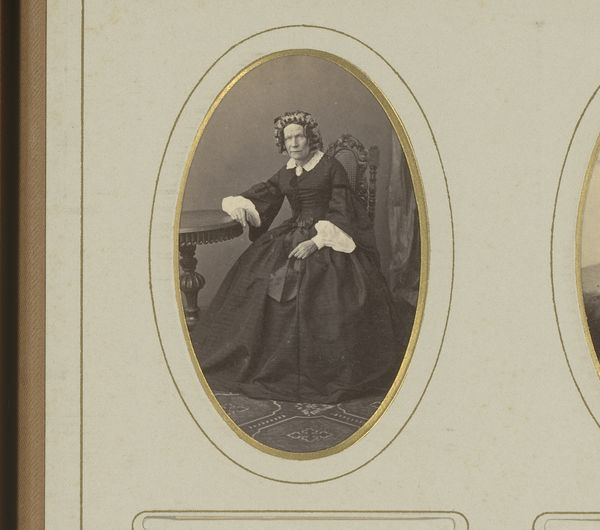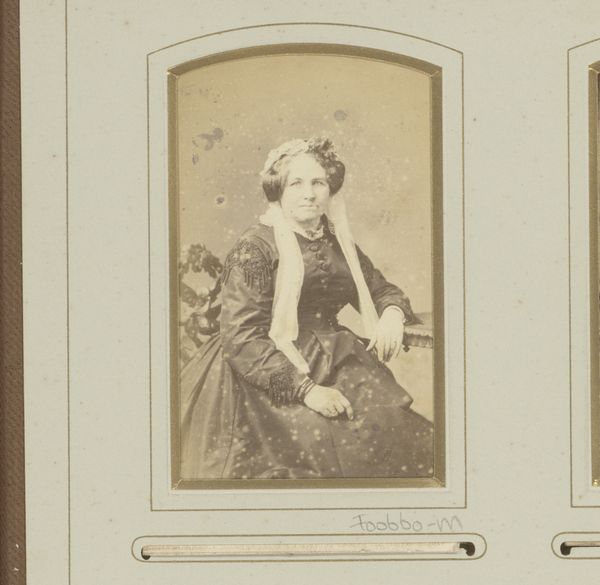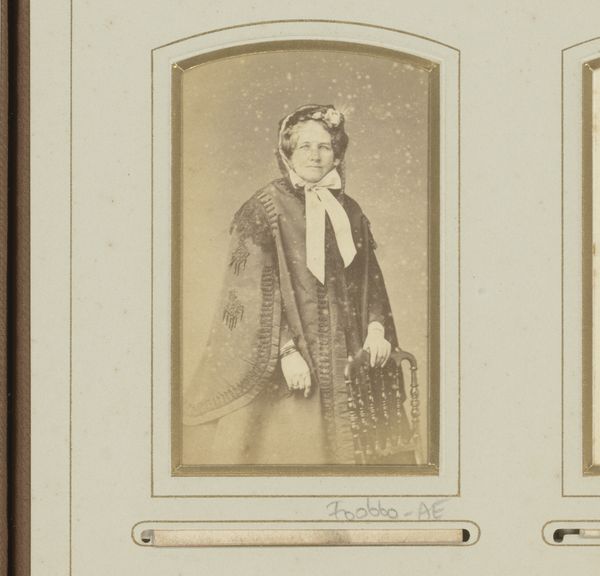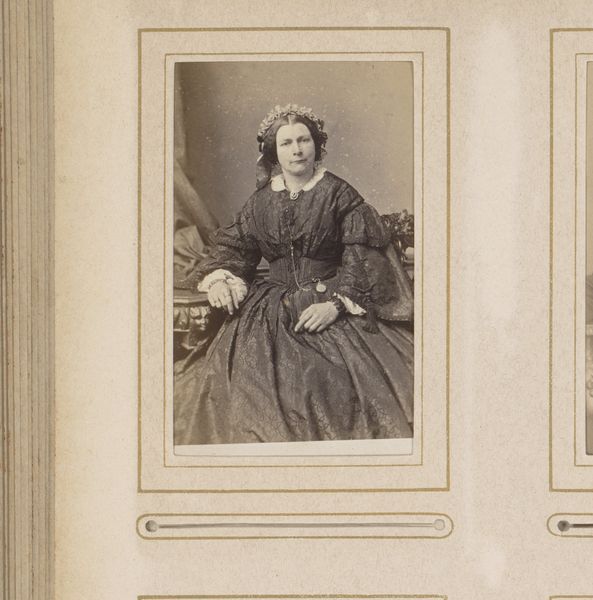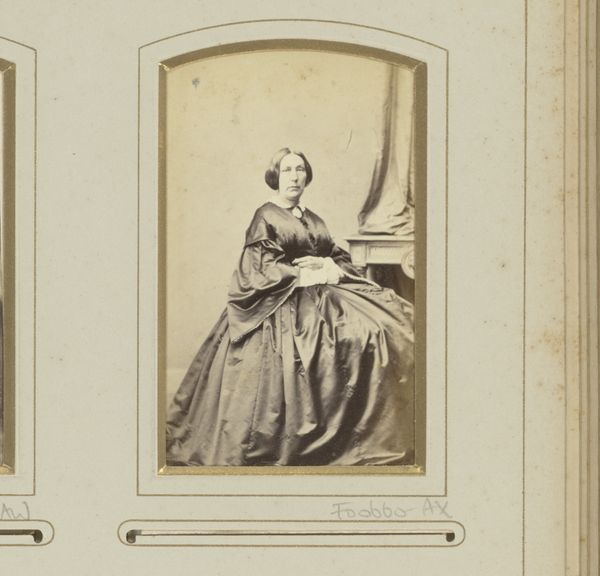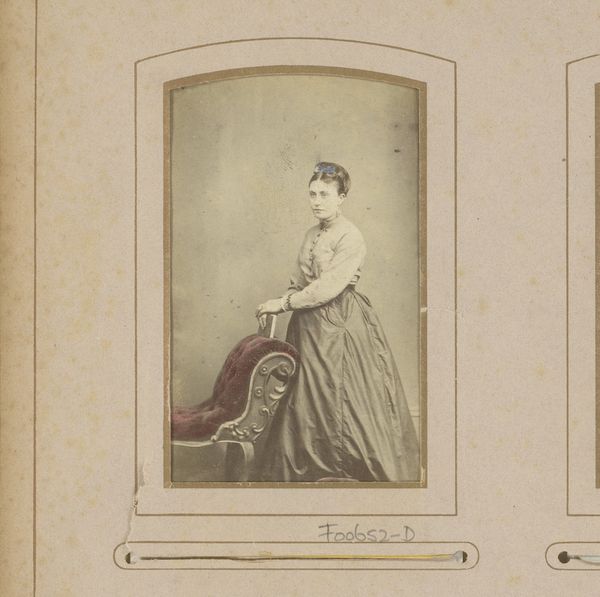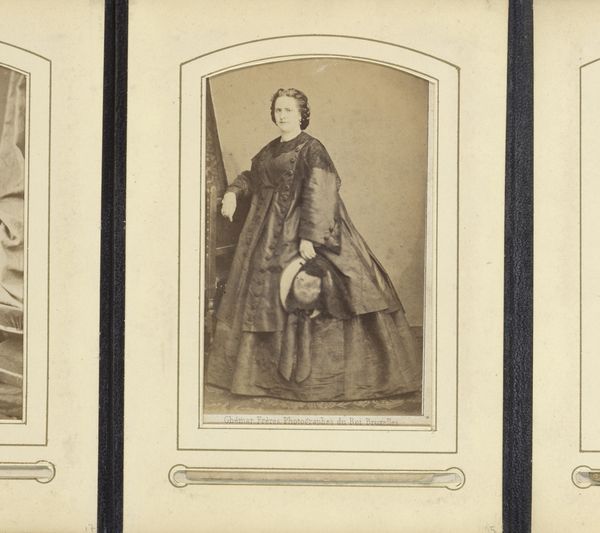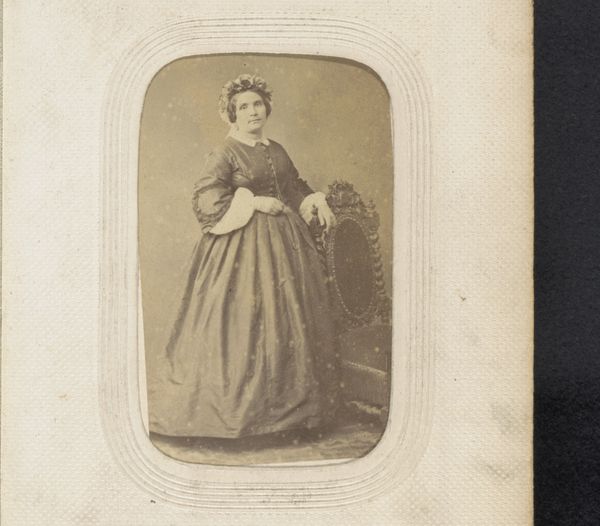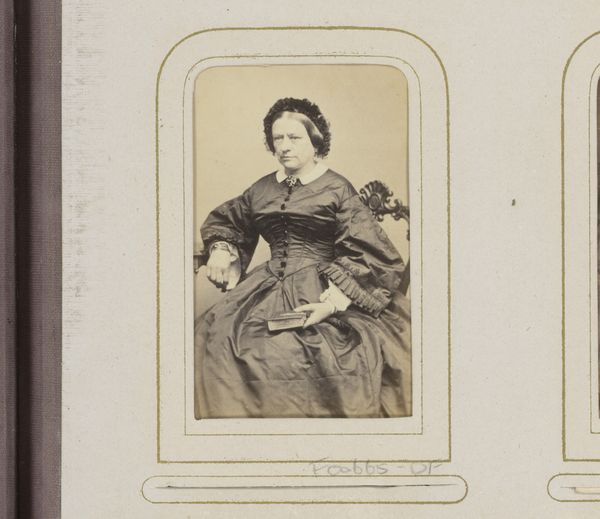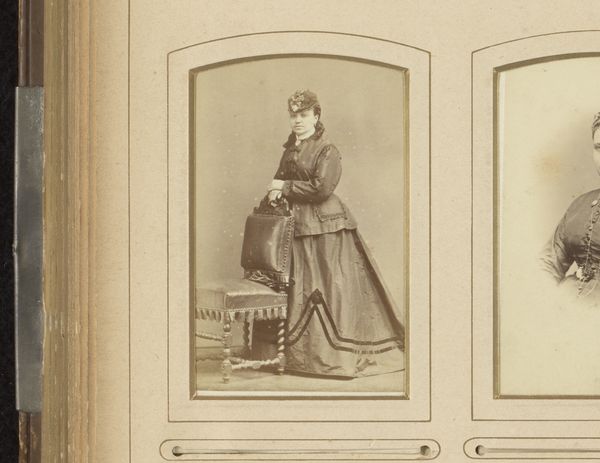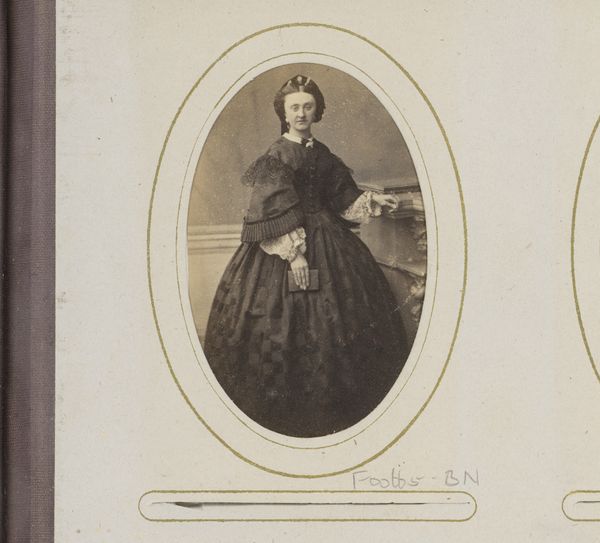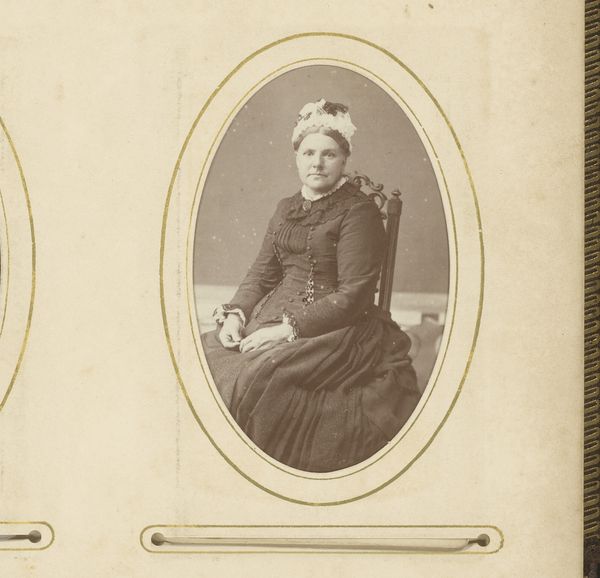
photography
#
portrait
#
charcoal drawing
#
photography
Dimensions: height 84 mm, width 51 mm
Copyright: Rijks Museum: Open Domain
Curator: This image, simply titled "Portret van een zittende vrouw met hoofddeksel", offers a glimpse into the mid-19th century, attributed to Joseph Dupont between 1853 and 1880. The photography captures a seated woman adorned with a headdress. Editor: Immediately, the light, the fabrics... it feels like a study in textures. The woman's dark dress pools around her, contrasted by the delicate lace and the somewhat severe headdress. It evokes a feeling of restrained elegance. Curator: The materiality is striking, isn't it? The photographic process itself—the careful crafting of the image, likely through a collodion process—hints at the labor involved in its creation. Consider the fabrics, the probable origins of those lace materials, the social status clothing like that signals...it's a study in consumption as much as portraiture. Editor: Absolutely. And the chair she's seated in. Even obscured, you get a sense of its opulence, and it seems deliberately positioned to showcase her stature, though, to be honest, her expression conveys something rather more serene than imperious to me. I wonder what thoughts occupy her? Curator: That serenity might stem from the very conditions of portraiture at that time, long exposure times necessitated a certain stillness, a submission, even, to the process. But beyond that individual reading, we must examine the broader market of photographic portraiture. For the middle and upper classes, like this woman, photographs became accessible ways to assert one's social standing and preserve their legacy. Editor: Maybe, but that notion of stillness…it also feels a little heartbreaking, as if we're intruding on a private moment, stealing a glance at a life frozen in time. Perhaps it's a visual echo of the Victorian preoccupation with memory. Curator: And of control. The creation and consumption of images like these solidified class structures, but the material legacy is complex. Preserved and then seen again after generations—the context and power shift. Editor: That’s true. Seeing it today lets me imagine all sorts of things: this woman’s day-to-day life and what might have truly interested her in this picture of formality. A fascinating mix of emotion and rigidness for me.
Comments
No comments
Be the first to comment and join the conversation on the ultimate creative platform.
